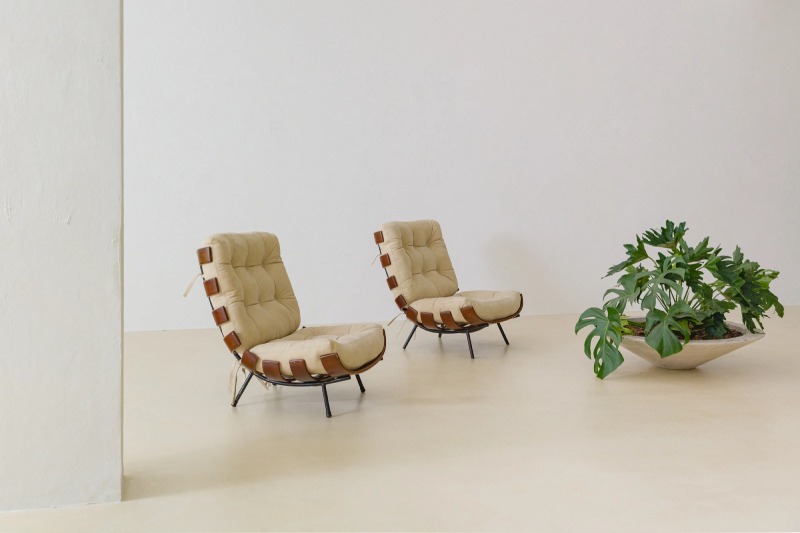Martin Eisler's Rib Chair: A Symbol of Brazilian Modernism
When Martin Eisler fled Nazi-occupied Vienna for Buenos Aires in 1938, he found himself amidst a transformative period in Latin America. With immigration, economic growth, and industrialization shaping the region, there emerged a demand for furniture to cater to the burgeoning global elite. Teaming up with Carlo Hauner, an Italian furniture manufacturer based in Brazil, Eisler established Forma, a brand poised to meet this demand. In a remarkably short span of time, they crafted a diverse range of furniture pieces, with Zesty Meyers of R & Company noting that their creations “essentially contributed to the industrialization of São Paulo.”
A standout among their designs was the 1952 Costela, or Rib chair. Characterized by a wrought-iron base enveloped in steam-bent wood “ribs” crafted from local Brazilian walnut, the chair provided a comfortable and relaxed seating experience. According to curator Ana Elena Mallet, the Rib chair epitomized the interplay between immigrant influences and the evolving industrial landscape of the time. Drawing inspiration from the likes of Le Corbusier and the Bauhaus movement, Eisler and Hauner integrated local materials, traditions, and expertise into their designs.

The enduring popularity of the Rib chair is evidenced by its continued production and reissues. While Forma produced variations of the chair until its dissolution in 2003, subsequent reissues have kept the design alive. Official versions, such as those produced by Studio Mais Móveis or Tacchini's 2019 reboot, offer modern interpretations of the classic design. However, true originals, estimated to number around 200 by Meyers, can be distinguished by specific details such as base proportions, wood type, and identifying stamps or labels.
Renowned tastemakers like artist Doug Meyer regard the Rib chair as an investment piece despite its modest comfort rating. Meyer acknowledges its practical shortcomings but emphasizes its sculptural quality, noting its ability to add drama to any space. With its timeless design and cultural significance, Martin Eisler's Rib chair stands as a testament to the enduring legacy of Brazilian modernism.
Martin Who?

Martin Eisler was an influential figure in the realm of mid-century modern design, particularly renowned for his furniture designs that seamlessly blended functionality with artistic flair. Born in Vienna, Austria in 1913, Eisler later immigrated to Brazil, where he left an indelible mark on the country's design landscape.
Eisler's design ethos was deeply rooted in the modernist movement, characterized by clean lines, geometric shapes, and an emphasis on simplicity and functionality. However, what set Eisler apart was his ability to infuse his designs with a distinct Brazilian sensibility, incorporating local materials and craftsmanship into his creations.
In the 1950s and 1960s, Eisler collaborated with fellow designer Carlo Hauner to form Forma, a design studio that produced some of their most iconic pieces. Together, they created furniture that was both elegant and innovative, using materials such as Brazilian hardwoods, leather, and metal to stunning effect.

One of Eisler's most iconic designs is the “Costela” (Rib) chair, which features a striking skeletal frame reminiscent of ribs, crafted from bentwood. This chair exemplifies Eisler's ability to marry form and function, as it not only serves as a comfortable seating option but also stands as a sculptural work of art.
Eisler's influence extended beyond his furniture designs; he was also a prolific writer and editor, contributing to numerous publications on design and architecture. His insightful commentary helped shape the discourse surrounding Brazilian design during his lifetime and continues to inspire designers and enthusiasts today.
Although Eisler passed away in 1977, his legacy lives on through his timeless designs, which are celebrated for their elegance, ingenuity, and enduring appeal in the world of modern furniture design.


